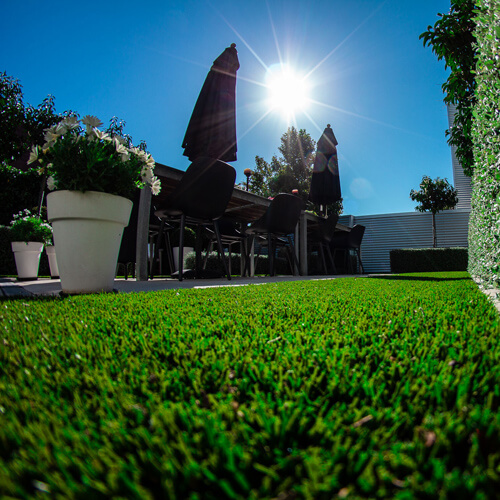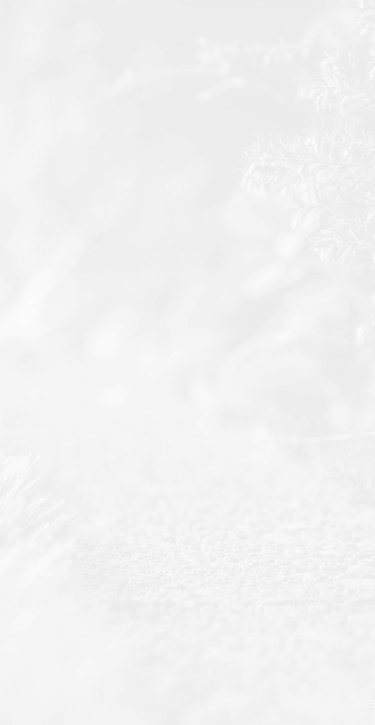
BLOG
The Environmental Benefits of SmartGrass
Abode Magazine spoke to Jack Kennedy, of SmartGrass, to dispel some of the myths about artificial grass.


Abode Magazine spoke to Jack Kennedy, of SmartGrass, to dispel some of the myths about artificial grass.
As we become increasingly aware of the importance of sustainable living, more homeowners across New Zealand, including major cities like Christchurch, Auckland, and Wellington, are seeking eco-friendly alternatives to traditional landscaping.
One of these alternatives is SmartGrass, an innovative artificial grass solution that has a range of environmental benefits over ordinary lawns. In this article, we’ll explore the positive impact that SmartGrass can have on the environment, highlighting its Earth Series—the only fully (and locally) recyclable artificial grass in New Zealand.
One of the most significant environmental benefits of SmartGrass is its ability to save water. Traditional lawns in New Zealand require significant amounts of water to stay green and healthy, especially during the hot, dry months. Irrigating your lawn contributes to water wastage, while SmartGrass requires no watering, preserving this valuable resource and reducing the burden on our water supply systems.
Maintaining a healthy, lush lawn often involves the use of fertilisers and pesticides. These chemicals can have detrimental effects on the environment, contaminating soil and groundwater, and causing harm to local wildlife. SmartGrass, on the other hand, requires no such treatments, making it a more environmentally friendly option for your outdoor space.
Traditional lawn maintenance involves the use of petrol-powered mowers, which produce greenhouse gas emissions and contribute to air pollution. SmartGrass requires no mowing, significantly reducing your carbon footprint.
Another environmental benefit of SmartGrass is its durability. SmartGrass features thicker blades of grass that are three times stronger than most other artificial grass options, ensuring that it lasts longer. This extended lifespan means fewer replacements, reducing the overall waste and impact on the environment.
One of the criticisms of artificial grass in the past has been its impact on waste and disposal. However, SmartGrass’s Earth Series addresses this concern by being the only fully (and locally) recyclable artificial grass in New Zealand. This innovative product ensures that your outdoor space remains sustainable and eco-friendly even at the end of its lifecycle.
When choosing a surface for your outdoor area, it’s essential to consider both usability and environmental impact. Concrete and other hard surfaces also have an environmental impact, but their usability may not be as versatile as SmartGrass. By opting for SmartGrass, you can create a functional, low-maintenance outdoor space that has a lower environmental impact than traditional lawns and many other landscaping options.
While artificial grass may not always be the most environmentally positive option in every instance—mainly depending on the size of the area—it is far more practical in many applications and offers better area utilisation. With its water-saving, low-maintenance features, long-lasting durability, and the fully recyclable Earth Series, SmartGrass is a sustainable solution for homeowners seeking an eco-friendly outdoor space that aligns with their practical needs. By choosing SmartGrass, you can enjoy a beautiful, functional lawn that contributes to a greener, more sustainable future for New Zealand, while making the most of your outdoor living area.
Being organised is key here. If this is a service you’d like to have ready to offer to your customers, then download our 2020 Artificial Turf Guide to learn more. Alternatively, get in touch with us and we’ll deliver you samples, pricing and important information.
Yes! Artificial grass is just like carpet, and can be laid indoors. Most of our products have a D or E class fire rating, meaning that they can usually be used indoors.
It is possible to install artificial grass yourself, however having artificial turf professionally installed may save you money in the long run. Builders will often prepare the base, and get the turf professionally installed.
You can learn exactly how to DIY install your artificial grass here.
Yes! As long as there are no sharp or high pressure points, heavy objects can be used on artificial grass.
SmartGrass Earth Series is 100% recyclable, and three times more durable. This means it lasts longer than any competitors’ products and carries a 10 year warranty.
SmartGrass has a range of turf that has been developed for high end residential homes instead of preschools. This is designed to look more like real grass.
SmartGrass Earth Series drains 5 times faster than other latex backed turf, which is essential in poor draining areas, and when dogs pee on it.
Contact us for a ballpark estimate over the phone or a measure & quote at home.
Artificial grass itself is priced per square metre (typically between $45-80/m2 +gst depending on the type), however the cost of the installation depends on a few factors.
A professional installation that is 30-100m2 in size typically costs (for the supply and installation of the grass):
Small areas (under 30m2) tend to cost approx. $300-$450/m2. Areas over 100m2 will benefit from scale of economies.
For comparison, SmartGrass does cost significantly more than a real lawn up front, but saves you thousands in maintenance costs long term. Per square metre, fully installed, SmartGrass is a similar cost to paving /outdoor tiles. SmartGrass is about half the cost of Kwila decking. A lot of the investment is associated with removing the exisiting lawn and then preparing a base for the SmartGrass – this ensures your lawn will properly drain and still look perfect for years to come.
The above figures are ballparks only. When we visit you we will assess your requirements and provide you a bespoke proposal which includes pricing for your custom solution. There are 23 factors that we consider to determine the cost of your installation which include things like the product you choose, your location, shape of the area, technicality of the install, access to site and the base preparation requirements.